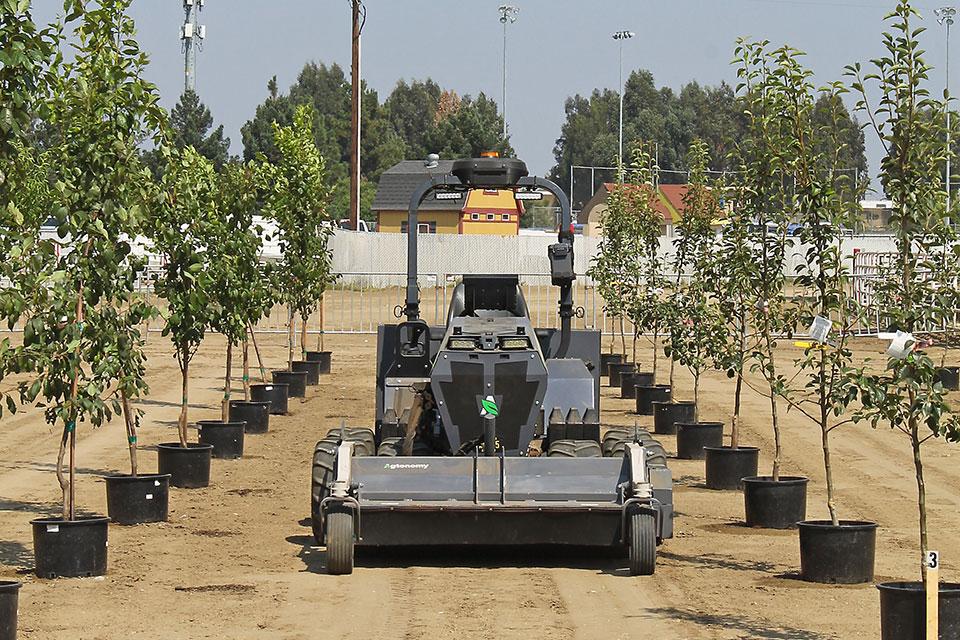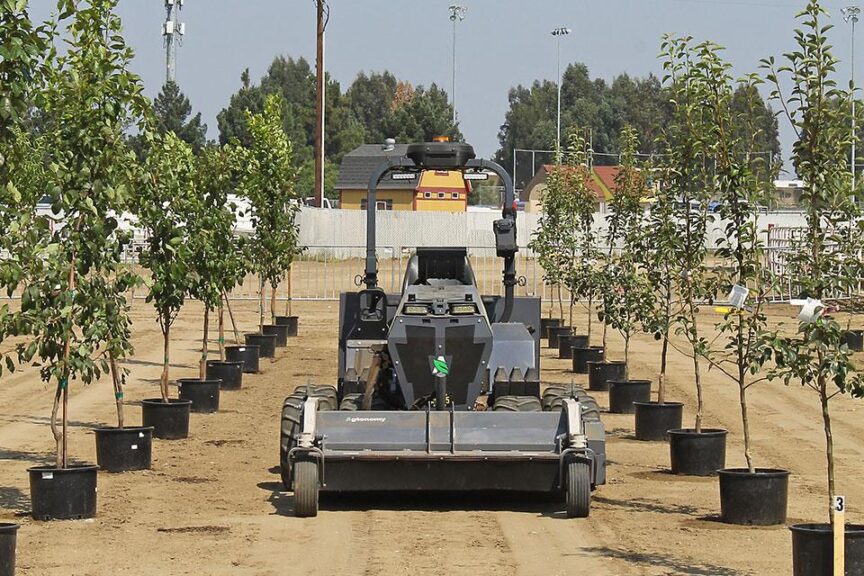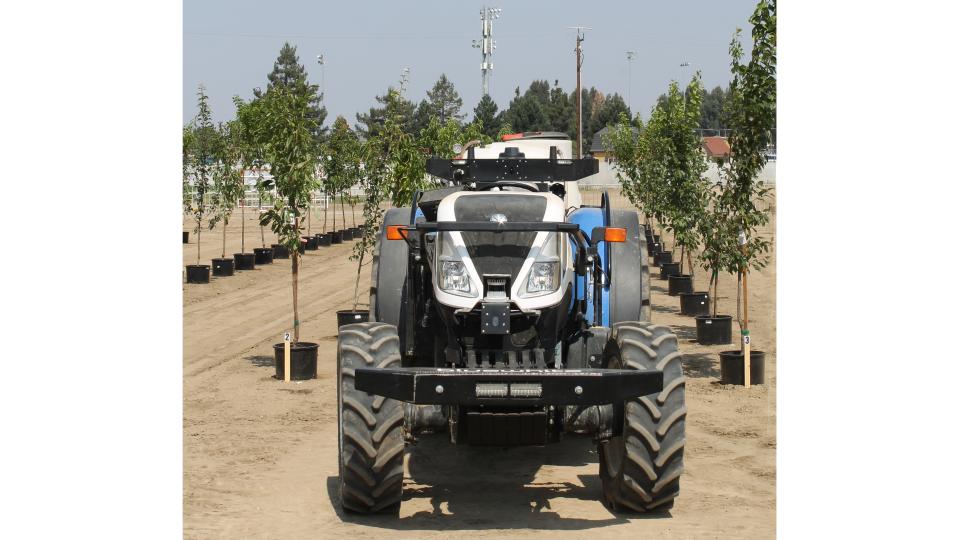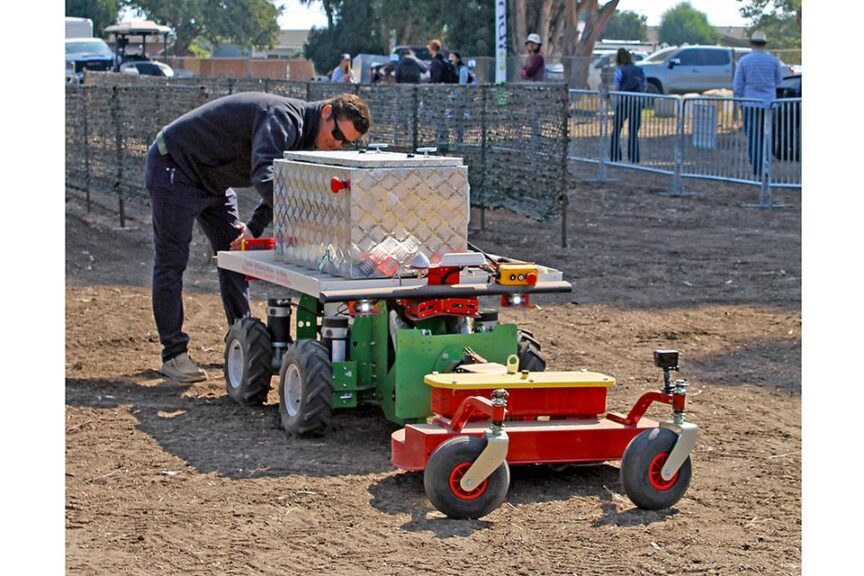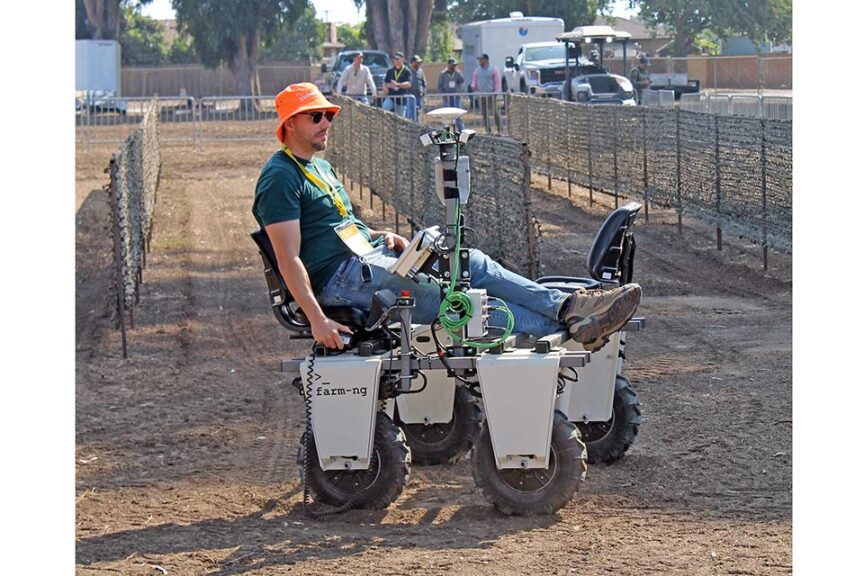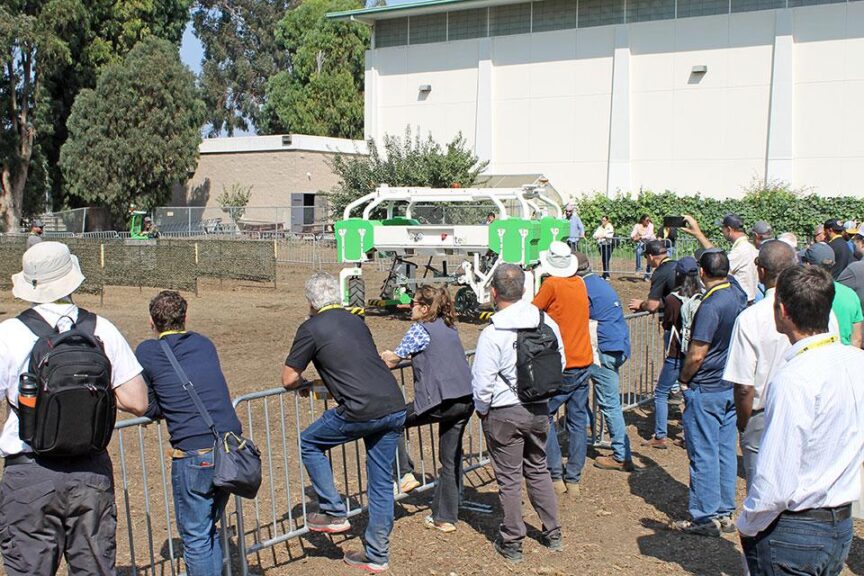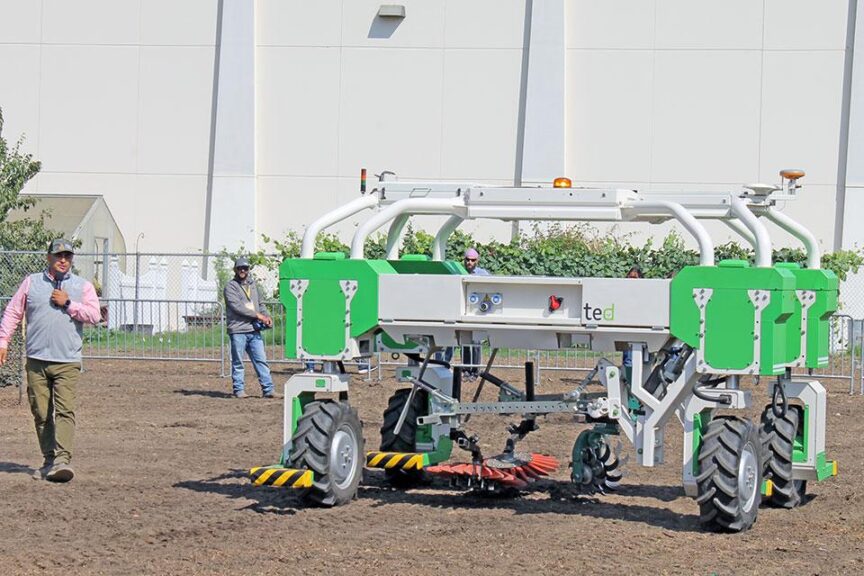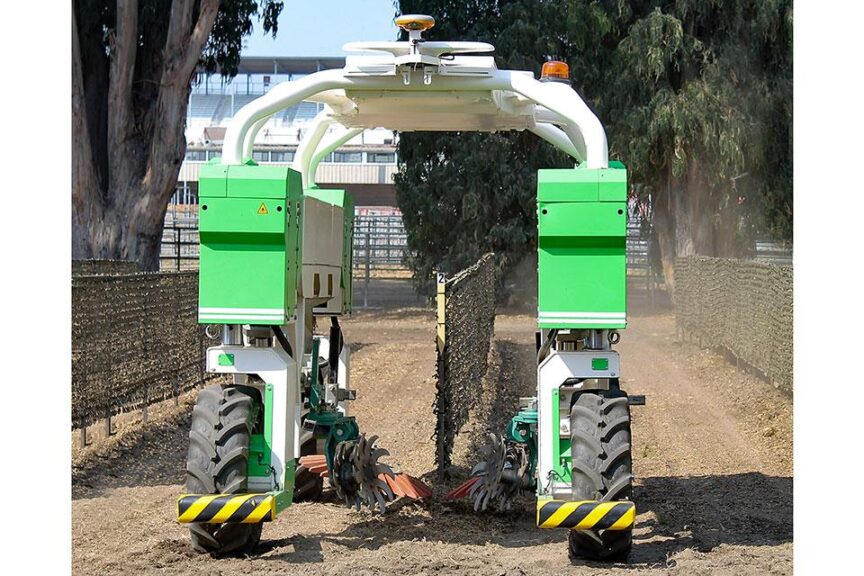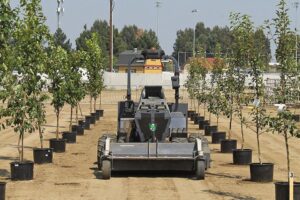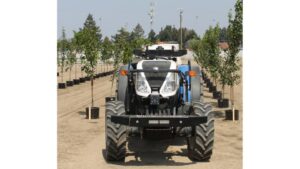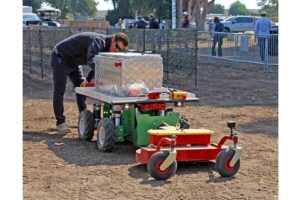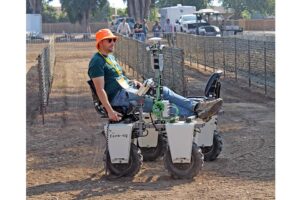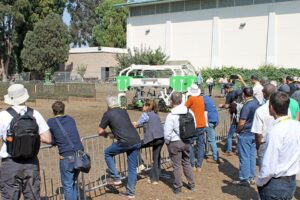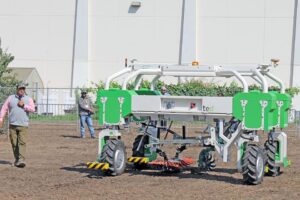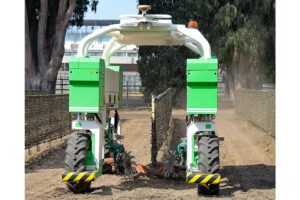Help Unwanted? Driverless Tractors and Bots Are Coming To a Farm Near You
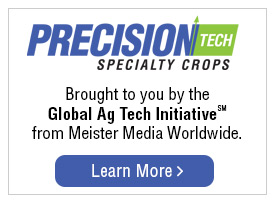
They’re here — finally. The robots growers have been hearing about for decades are not just being tested in the lab, or even the field — they are out working in U.S. orchards and vineyards. More than 1,700 specialty crop growers, start-up engineers, investors, and others affiliated with the industry recently attended FIRA USA 2023 in Salinas, CA, to see the latest robots for fruit and vegetable production in action.
FIRA’s first day was devoted to education — there was a tremendous amount of information to be had — while the final two days were chiefly devoted to equipment demonstrations in a vegetable field, as well as areas set up to look like both orchards and vineyards.
The Global Organization for Agricultural Robotics (GOFAR), a French nonprofit that promotes and develops agricultural robotics, organized FIRA USA. There were also two co-organizers, THE VINE, an agriculture, food, and biotech innovation network based in Davis, CA, and Western Growers.
Scroll the photo slideshow above to check out some of the scenes from FIRA USA 2023.
The Vice President of Innovation for Western Growers, Walt Duflock, was a member of the conference’s first panel, which zeroed in on a crop Duflock said was perfect for both fruit and vegetable growers — strawberries. (It’s also the only crop regularly covered in both American Fruit Grower and Meister Media Worldwide sister brand American Vegetable Grower).
The panel’s title was “Practical Translation of R&D and Technology to the California Strawberry Industry,” and Duflock noted that the key was communication among the various players. Engineers might fully understand the industry, but that’s not enough, as after initial funding, start-up companies can later be starved for cash to continue.
“It would be really good for the investors to know what growers need,” he said.
SPEAK THE LANGUAGE
Unfortunately, examples of this ‘Agtech-Disconnect’ are too common, says Cal Poly Mechanical Engineering Professor Mojtaba Ahmadi. Most investors, and even many of the start-ups, focus on harvest above all else, sometimes to the exclusion of everything else.
Growers obviously have many other tasks, and these can take a lot of labor too. After all, the goal is to reduce labor costs, not just harvest labor costs. Ahmadi says when he talks to growers, they are interested in robots performing these other tasks, correctly pointing out that harvest is usually the most difficult for robots because the fruits can’t be mishandled.
“Rather than harvest, what about solving pruning? Very few companies approach us [at Cal Poly], and I wish they would come to us first,” he says. “Everything must be grower-friendly. Try to speak growers’ language, that helps a lot.”
The more time investors and inventors spend with growers, the better, and best of all is to meet growers in their environment, agreed Andrew Wulf, Senior Director of Strawberry Product Leadership at Driscoll’s.
“These field days are absolutely critical; you need to get out and meet in the field,” he says.
Getting out to the field has other benefits, Wulf says. For one, companies are inclined to take a “one-size-fits-all approach” because it’s simpler and easier. But a smaller grower might find a great value in the use of something not high-tech, but it is highly useful.
“Growers come in all types in terms of size, sophistication, and so forth,” he says. “It’s not all about the tech, it has to make business sense.”
World FIRA will be held Feb. 6-8, 2024, in Toulouse, France. FIRA USA 2024 will be held in Sacramento, CA, (date TBD) leaving the cool Salinas Valley for the heat of the Central Valley.




